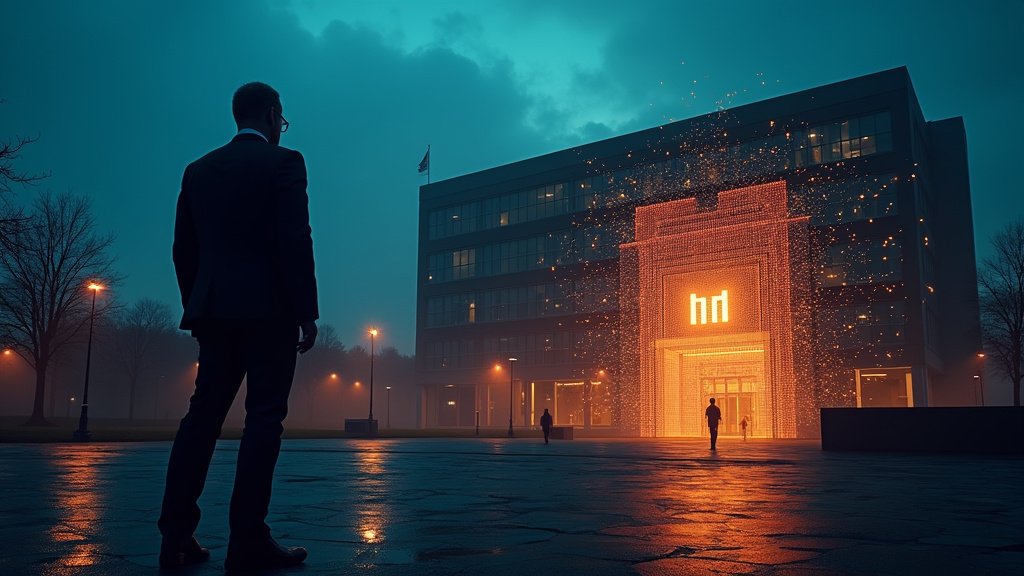In a landmark development for the future of computing, Google has announced a significant breakthrough with its “Quantum Echoes” algorithm, achieving the world’s first verifiable quantum advantage. This advancement, detailed in the prestigious journal Nature, signifies that a quantum computer can now perform a complex task vastly superior to even the most powerful supercomputers, with results that are independently repeatable and confirmable. The achievement, powered by Google’s state-of-the-art “Willow” quantum chip, marks a critical step towards unlocking the practical, real-world applications of quantum computing, a field that has long been the subject of intense research and speculation.
The ‘Quantum Echoes’ Algorithm: A New Paradigm for Quantum Computation
At the heart of this news is the innovative “Quantum Echoes” algorithm, also known as an Out-of-Time-Ordered Correlator (OTOC) algorithm. This sophisticated method operates by sending a precisely controlled signal into a quantum system, slightly disturbing a qubit, and then meticulously reversing the signal’s evolution. This process allows scientists to capture an amplified “echo” through constructive interference, enabling them to measure subtle quantum effects and atomic interactions with unprecedented precision. The algorithm’s design specifically tests for both computational complexity and precision, a combination that is essential for scalable and trustworthy quantum computation. This unique approach is what allows for “quantum verifiability,” meaning its results can be cross-benchmarked and confirmed by other quantum computers or even by nature itself.
Willow Chip: The Engine Behind the Quantum Leap
This groundbreaking feat was made possible by Google’s advanced “Willow” quantum chip, a 105-qubit superconducting processor. Introduced in December 2024, Willow represents a significant leap in quantum hardware, built with superconducting quantum circuits that function as macroscopic “artificial atoms”. The chip is engineered for high-fidelity operations, boasting impressive accuracy for single-qubit gates, entangling gates, and readout functions, all while operating at remarkable speeds. Willow’s capabilities, including its ability to reduce errors as it scales, are crucial for running complex quantum algorithms like Quantum Echoes, which demand both speed and precision. The Willow chip’s performance has been a key factor in demonstrating that quantum processors can now produce repeatable, reliable results, moving the technology closer to practical use.
Accelerating Scientific Discovery and Innovation
The implications of Google’s “Quantum Echoes” breakthrough extend far beyond theoretical computing. The algorithm’s ability to precisely model and unravel intricate atomic interactions is poised to revolutionize fields such as medicine, materials science, and chemistry. Researchers can now explore previously inaccessible information about complex systems, from molecular structures to magnets and even black holes. Notably, the Quantum Echoes algorithm can enhance Nuclear Magnetic Resonance (NMR) spectroscopy, a technique vital for determining molecular structures, by acting as a “molecular ruler” to measure longer distances between atoms than current methods allow. This could dramatically accelerate drug discovery and the design of advanced materials, leading to new medicines, more efficient batteries, and novel materials for cleaner energy. This trending technology is shaping the future of scientific research.
Verifiability: The Key to Trust and Real-World Impact
What truly sets this announcement apart is the emphasis on “verifiable” quantum advantage. While previous demonstrations, such as Google’s own 2019 “quantum supremacy” with the Sycamore processor, showed that quantum computers could perform tasks far beyond classical capabilities, the results were often difficult to independently verify. The “Quantum Echoes” algorithm, however, provides a method for confirming its own results, drawing a clear line between what quantum computers can achieve and what classical machines cannot. This repeatability is fundamental to building trust in quantum computations and is a crucial prerequisite for their adoption in real-world applications. This news represents a significant step, moving quantum computing from the realm of experimental curiosity towards tangible technological utility.
The Road Ahead: From Lab to Application
Google’s achievement with the Quantum Echoes algorithm and the Willow chip is not an endpoint but a significant milestone on a longer journey. The company views this as a pivotal move, and executives are optimistic that real-world applications of quantum computing could emerge within the next five years. Google Quantum AI has a six-milestone roadmap, and this breakthrough marks a key achievement on the software track, complementing earlier hardware milestones like quantum error correction. While acknowledging that fully fault-tolerant and large-scale quantum computing is still years away, the demonstration of verifiable quantum advantage signals a new era of progress. This rapid news in quantum technology highlights the accelerating pace of innovation, promising to reshape scientific discovery and drive future technological advancements.





